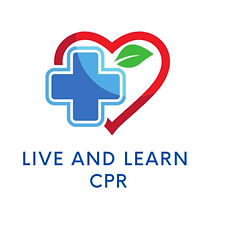The New AHA CPR Guidelines Are Out — Here’s What You Should Know
- kelly young
- 6 days ago
- 3 min read
Every five years, the American Heart Association releases updated CPR and First Aid guidelines based on the newest medical research. The goal is always the same:make lifesaving skills easier to learn and more effective in real emergencies.
The newest guidelines are officially out — and there are some important changes everyone should know, whether you’re a parent, a grandparent, a babysitter, or just someone who wants to be prepared.
Here’s a simple breakdown of what’s new (no medical jargon, no overwhelm).
1. One Simple “Chain of Survival” for All Ages
In past years, the AHA used different versions of the Chain of Survival depending on whether the person was a child, adult, or in the hospital.
Now, there's one universal version.
Why this matters:
It’s easier to learn
Easier to remember
Everyone follows the same steps
In emergencies, simple = better.
2. Big Changes to Choking Response
This is the one update everyone should pay attention to.
For adults & children (over 1 year):
➡️ 5 back blows → 5 abdominal thrusts- Repeat the pattern until the object comes out or the person becomes unresponsive.
This is DIFFERENT from what many people learned prior to the updates.
For infants (under 1 year):
➡️ 5 back blows → 5 chest thrusts with palm of your hand- Repeat as needed.
And here’s what’s important: No abdominal thrusts for infants.Those can cause injury.
If you care for babies or young kids, this change is worth learning.
3. Updated Guidance for Opioid Emergencies
The new guidelines include clear steps on what to do if you think someone may be experiencing an opioid overdose.
They emphasize:
What signs to look for (slow breathing, blue lips, tiny pupils, unresponsive)
When to use naloxone (Narcan)
Why you should still start CPR if the person isn’t breathing
This is knowledge that can help anyone — at home, in a public place, or out with friends.
4. Stronger Focus on AED Use
AEDs (the portable shock devices you see in schools, gyms, airports, etc.) save lives — and the AHA wants more people to feel comfortable using them.
Two important notes:
Anyone 12 or older can be effectively trained to use an AED.
Early use of an AED dramatically increases the chances of survival.
Even if you’ve never touched an AED before, you should know this: They’re designed for everyday people. Open the box, turn it on, and it talks you through everything.
5. More Clarity for Infant & Child Emergencies
Parents, grandparents, and babysitters will appreciate this one.
The new guidelines provide clearer instructions on:
Infant choking
Child CPR steps
When to call for help
When to use an AED on a child
If you have little ones in your life, these updates are especially relevant.
Why These Updates Matter
You don’t need to be a doctor or first responder to save a life.
You just need:
Current information
Basic skills
Confidence to act
CPR and First Aid are for everyone, and the new guidelines make it even easier to step in and help someone during an emergency.
Final Thoughts
The AHA guidelines change because science improves — and that’s a good thing.Every update makes it easier for everyday people to step up and save a life.
If it’s been a few years since your last CPR class, or if you’ve never taken one, this is a great time to learn. Not for a certificate, not for your job — but for the people you love.
Be prepared. Be confident. You never know when you could be the reason someone gets a second chance.








Comments